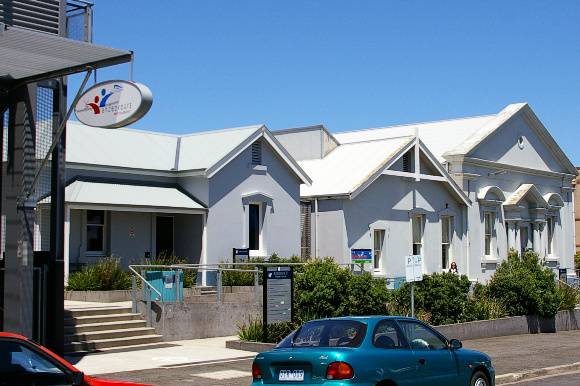| Back to search results » | Back to search page » |
|
ORDERLY ROOM AND RESIDENCE
Other NameDRILL HALL AND RESIDENCE Location8 KEPLER STREET WARRNAMBOOL, WARRNAMBOOL CITY
File Number600613LevelRegistered |
|
Statement of Significance
What is significant? The Warrnambool Orderly Room was constructed in 1868 on the Warrnambool Government Reserve and expanded to include a Gun Room and Residence in the late 1880s. The masonry Orderly Room was designed by the Shire Engineer A. Kerr and was regarded to be one of the most elegant of the volunteer defence association buildings in Victoria. A sense of isolation and the vulnerability of Victoria's gold wealth precipitated the development of the volunteer movement in the colony, and in 1854, the Volunteer Act was passed. In Warrnambool there were attempts to form a volunteer unit as early as 1855; however it appears these were unsuccessful. The Orderly Room on Kepler Street was built and used by the Warrnambool Detachment of the Western Corps Royal Victorian Volunteer Artillery. After the 1858 Amending Act, the Warrnambool Volunteer Rifle Corps was established, disbanded in 1863, before the new Warrnambool Detachment was formed in September 1866. Before a permanent building was provided, the Volunteer corps met and trained in the Royal Exchange Hotel. A public appeal was made in 1867 and in 1868 a site was reserved for an Orderly Room on the Kepler Street edge of the government reserve. The building designed by council engineer, Andrew Kerr and was opened with a grand ball on New Year's Eve 1868, with the celebrations were deemed so successful that another ball was staged the following evening. The then Governor of Victoria, Sir Henry Manners Sutton, claimed it to be the finest Orderly Room he had seen in the Colony. In early 1869, the Orderly Room grounds and land adjacent to it were permanently reserved for the militia by the Government. The hall, aside from its military purposes, was a popular venue for social and cultural functions, and was the temporary home for two schools between 1870 and 1872. In 1884, new legislation was passed which abandoned the volunteer system in favour of a partly paid Militia Force to supplement the Colony's small permanent defence force. The Warrnambool facilities were retained for use by the new militia. The addition of the Gun Room and the adjacent cottage to the Orderly Room in September 1888, were part of the Public Works Department major upgrade of orderly room facilities, headed by S.E. Bindley. During both WW I and WW II the Orderly Room was used as the headquarters of the local military authorise to enlist volunteers and for medical examinations. The Warrnambool Orderly Room was used for military training until after the Second World War, and later used as an assembly hall and venue for concerts held by the Warrnambool Technical School, and as the main venue for the local basketball competition. The Warrnambool Technical College took over the premises in February 1960 and the Orderly Room currently houses the Student and Learning Centre of the South-West TAFE. How is it significant? The Warrnambool Orderly Room and Residence is of historical and architectural significance to the state of Victoria. Why is it significant? The Warrnambool Orderly Room and Residence is of historical significance as one of only two surviving masonry Orderly Rooms from the period of volunteer defence in Victoria. It is historically significant for its association with the colonial volunteer defence movement which reached its peak during the mid-nineteenth century. Its continual usage throughout the peak of the nineteenth century volunteer movement, through to the militia system after 1884 and usage by defence force authorities during World War I and II is also important. The Warrnambool Orderly Room and Residence is of architectural significance as an early masonry orderly room, and as an example of a mid-nineteenth century Volunteer Forces complex, encompassing the Orderly Room, Gun Room and Residence. It is important an example of the development of Orderly Rooms after the 1884 change in legislation which disbanded the volunteer forces in favour of a partly paid militia. Between 1885 and 1889, Public Works Department embarked on a construction program which saw many Orderly Rooms demolished or upgraded. The Warrnambool Orderly was considered worth retaining by the department, and the Gun Room and Residence were constructed during this period, expanding the facilities for the Warrnambool militia.
Group
Military
Category
Barracks & housing








